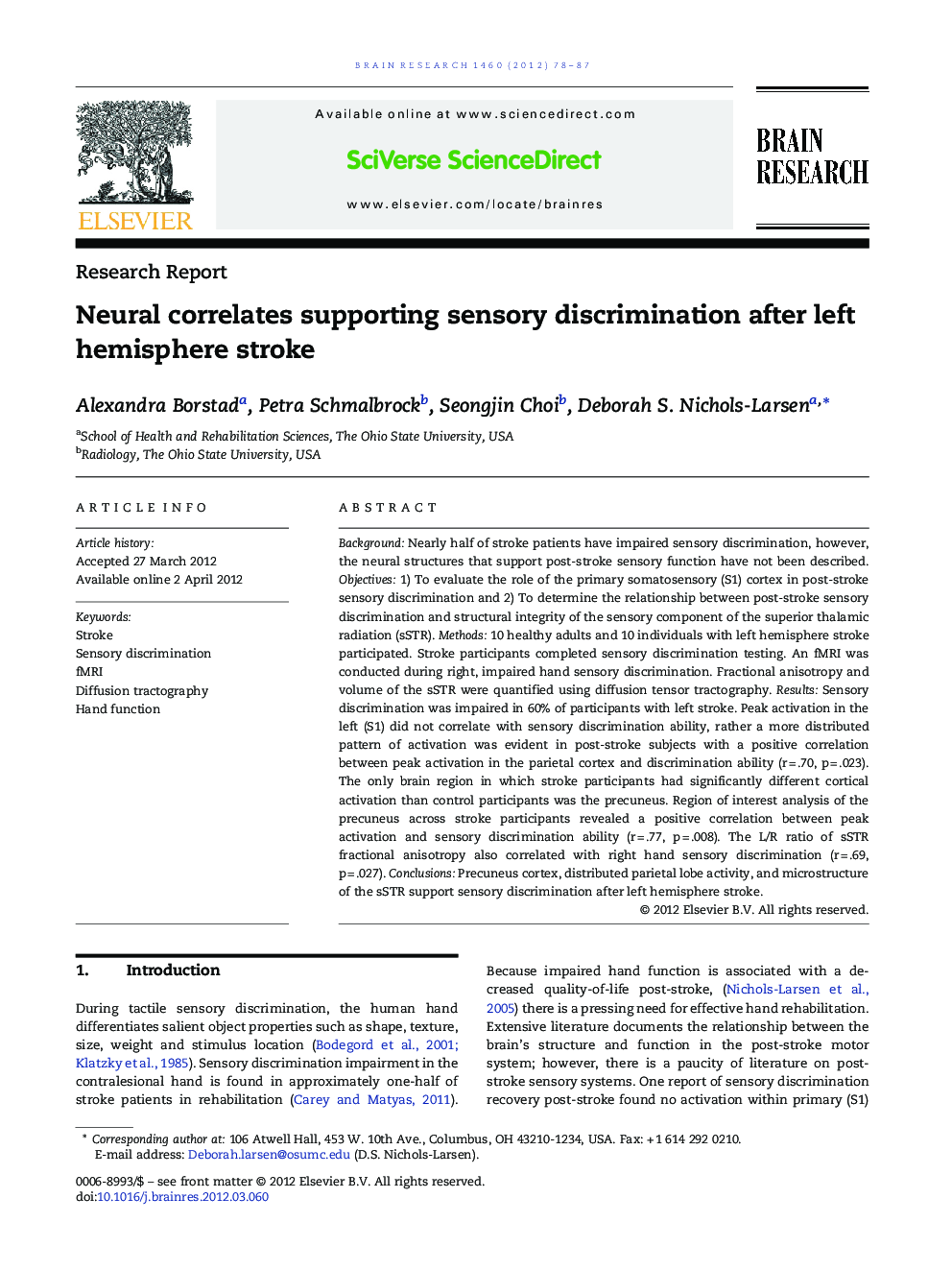| کد مقاله | کد نشریه | سال انتشار | مقاله انگلیسی | نسخه تمام متن |
|---|---|---|---|---|
| 4325218 | 1613979 | 2012 | 10 صفحه PDF | دانلود رایگان |

Background: Nearly half of stroke patients have impaired sensory discrimination, however, the neural structures that support post-stroke sensory function have not been described. Objectives: 1) To evaluate the role of the primary somatosensory (S1) cortex in post-stroke sensory discrimination and 2) To determine the relationship between post-stroke sensory discrimination and structural integrity of the sensory component of the superior thalamic radiation (sSTR). Methods: 10 healthy adults and 10 individuals with left hemisphere stroke participated. Stroke participants completed sensory discrimination testing. An fMRI was conducted during right, impaired hand sensory discrimination. Fractional anisotropy and volume of the sSTR were quantified using diffusion tensor tractography. Results: Sensory discrimination was impaired in 60% of participants with left stroke. Peak activation in the left (S1) did not correlate with sensory discrimination ability, rather a more distributed pattern of activation was evident in post-stroke subjects with a positive correlation between peak activation in the parietal cortex and discrimination ability (r = .70, p = .023). The only brain region in which stroke participants had significantly different cortical activation than control participants was the precuneus. Region of interest analysis of the precuneus across stroke participants revealed a positive correlation between peak activation and sensory discrimination ability (r = .77, p = .008). The L/R ratio of sSTR fractional anisotropy also correlated with right hand sensory discrimination (r = .69, p = .027). Conclusions: Precuneus cortex, distributed parietal lobe activity, and microstructure of the sSTR support sensory discrimination after left hemisphere stroke.
► Sensory discrimination ability is measured using the Hand Active Sensation Test.
► Functional and diffusion magnetic resonance imaging is used for quantification.
► Sixty percent of participants with left stroke had impaired sensory discrimination.
► Three neural correlates of post-stroke sensory discrimination are proposed.
Journal: Brain Research - Volume 1460, 15 June 2012, Pages 78–87